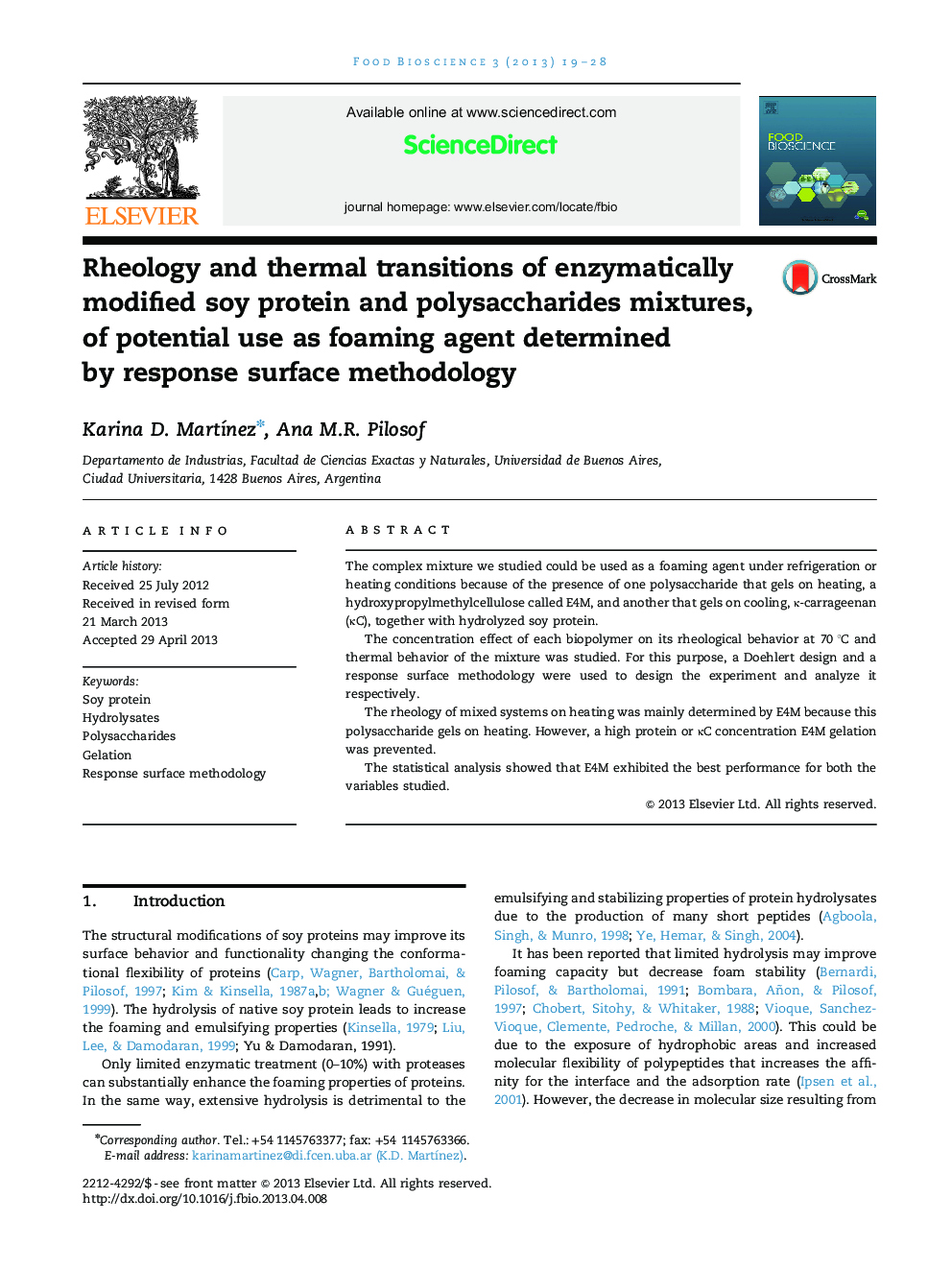| کد مقاله | کد نشریه | سال انتشار | مقاله انگلیسی | نسخه تمام متن |
|---|---|---|---|---|
| 19715 | 43121 | 2013 | 10 صفحه PDF | دانلود رایگان |

●The effect of biopolymers concentration on rheological and thermal behavior was evaluated.●The rheology of mixed systems on heating was determined by E4M because it gels.●E4M showed the best performance for both thermal transitions measured.●The E4M transitions were dependent on the other polysaccharides concentrations.●The kappa-carrageenan transitions showed a thermodynamic incompatibility with E4M.
The complex mixture we studied could be used as a foaming agent under refrigeration or heating conditions because of the presence of one polysaccharide that gels on heating, a hydroxypropylmethylcellulose called E4M, and another that gels on cooling, κ-carrageenan (κC), together with hydrolyzed soy protein.The concentration effect of each biopolymer on its rheological behavior at 70 °C and thermal behavior of the mixture was studied. For this purpose, a Doehlert design and a response surface methodology were used to design the experiment and analyze it respectively.The rheology of mixed systems on heating was mainly determined by E4M because this polysaccharide gels on heating. However, a high protein or κC concentration E4M gelation was prevented.The statistical analysis showed that E4M exhibited the best performance for both the variables studied.
Evolution of elastic component (G′), viscous (G″) and relative viscoelasticity (tan δ) as a function of time for an experimental point as example. The program involves a heating phase (from 60 to 70 °C), an isothermal phase (70 °C) and a last phase of cooling (from 70 to 10 °C).Figure optionsDownload as PowerPoint slide
Journal: Food Bioscience - Volume 3, September 2013, Pages 19–28